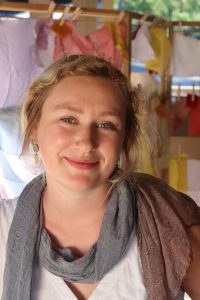CAA News Today
News from the Art and Academic Worlds
posted by CAA — May 06, 2020
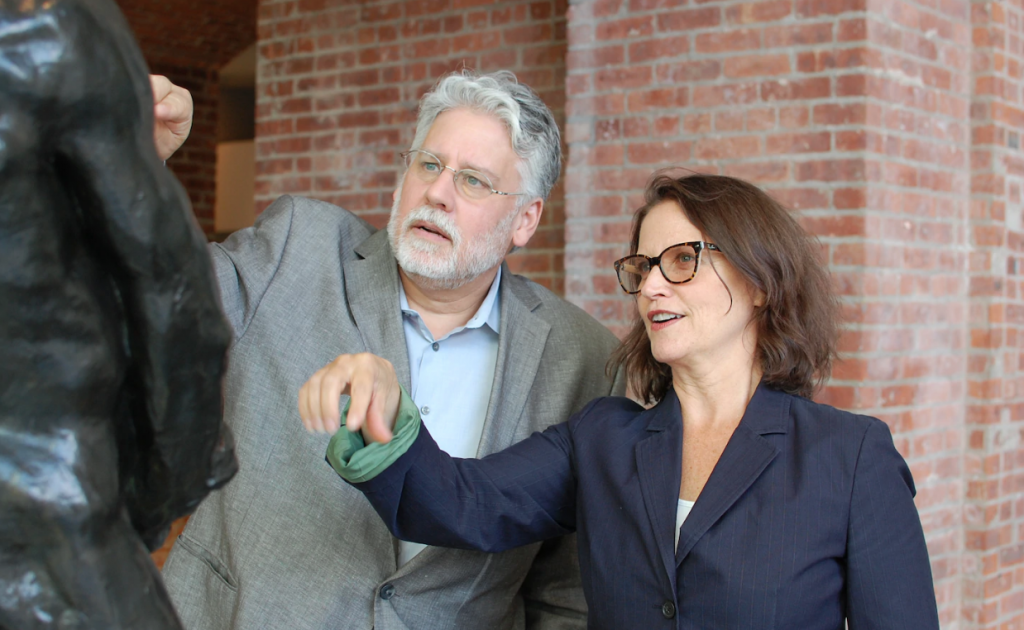
Steven Zucker and Beth Harris, the two art historians behind Smarthistory, look at a bronze scuplture by Auguste Rodin at the Brookyln Museum in 2014. Photo: Lisa Fisher, via Washington Post
|
|
|
|
|
Want articles like these in your inbox? Sign up for our weekly newsletter:
CAA Names Appointed Directors to the Board of Directors
posted by CAA — Apr 30, 2020
CAA has named John Davis, Katy Rogers, and Kenneth Wissoker to our Board of Directors as appointed directors, each for a four-year term. “CAA’s appointed directors bring experience and perspectives that complement the strength and vision of the elected members of CAA’s board. The extent of scholarship, leadership, and professional accomplishment of the three new appointed directors will be invaluable to CAA as we begin strategizing as to how the organization can best serve our members and the art community at large in light of the ongoing effects of the COVID-19 crisis,” said N. Elizabeth Schlatter, President of CAA. “We are exceedingly grateful for the service and dedication of these appointed directors as well as that of all of our board members who volunteer so much time and commitment to our field.”
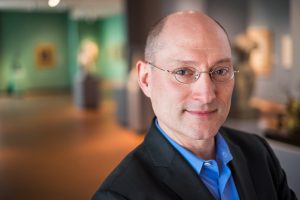
John Davis
John Davis is a historian of the art and architecture of the United States. For twenty-five years, he served on the faculty of Smith College, where he taught in the art history and American studies programs, chaired the Art Department, and served as Associate Provost and Dean for Academic Development. In 2017, he joined the Smithsonian Institution as Provost and Under Secretary of Museums, Education, and Research, with responsibility for nineteen museums, nine research institutes, twenty-two libraries, fellowships and internships, and the National Zoo. He is currently serving as the Interim Director, Cooper Hewitt, Smithsonian Design Museum, in New York City. He has been a visiting professor in Japan, Belgium, and France and is an elected member of the American Antiquarian Society. His most recent publication is Art of the United States, 1750-2000: Primary Sources (2020), coauthored with Michael Leja.
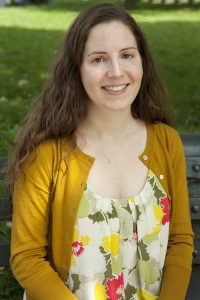
Katy Rogers
Katy Rogers is vice president and secretary of the Dedalus Foundation, where she also serves as the Programs Director and Director of the Robert Motherwell catalogue raisonné project. A graduate of the University of Colorado, she received her MA in Art History from Hunter College. She is also an alumna of the Whitney Museum of American Art’s Independent Study Program (ISP) where she was a Helena Rubinstein Curatorial Fellow. She is the co-author of the catalogue raisonné of Motherwell’s paintings and collages (Yale University Press 2012), and of Robert Motherwell: 100 Years (Skira 2015). She is currently working on a catalogue raisonné of Motherwell’s drawings to be published by Yale University Press in fall 2022. Since 2013, she has been the President of the Catalogue Raisonné Scholars Association where she co-organized the 2015 conference “The Catalogue Raisonné and its Construction” and the 2018 conference “The Afterlife of Sculptures: Posthumous Casts in Scholarship, the Market, and the Law.”

Ken Wissoker
Ken Wissoker is Senior Executive Editor at Duke University Press, acquiring books across the humanities, social sciences, and the arts. He joined the Press as an Acquisitions Editor in 1991; became Editor-in-Chief in 1997; was named Editorial Director in 2005; and assumed his current position in 2020. In addition to his duties at the Press, he serves as Director of Intellectual Publics at The Graduate Center, CUNY in New York City. He has published more than a thousand books which have won over one hundred and fifty prizes. He has written on publishing for The Chronicle of Higher Education, The Scholarly Kitchen, and Cinema Journal, and writes a column for the Japanese cultural studies journal “5.” He speaks regularly on publishing at universities in the United States and around the world.
About CAA Appointed Directors
Appointed directors bring a variety of views and skills that contribute to CAA’s growth and stability as a professional support organization. In February 2010, CAA members approved an amendment to Article VII, Section IV of the organizational By-laws to establish a new category of appointed director. Learn more.
CAA Announces Isimeme Omogbai as Executive Director and CEO
posted by CAA — Mar 30, 2020
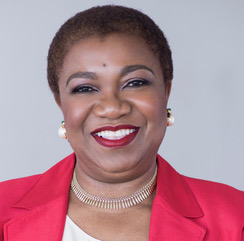
Isimeme Omogbai.
CAA is pleased to announce Isimeme (Meme) Omogbai as its next executive director in an executive search process guided by Arts Consulting Group. Omogbai succeeds David Raizman, who has served as CAA’s interim executive director since July 2019. Omogbai begins at CAA on March 30, 2020.
“It is a pleasure to welcome Meme Omogbai to CAA as Executive Director,” says Jim Hopfensperger, President of CAA. “The Search Committee conveyed its confidence that Meme will apply her unique administrative experiences, striking energy, and clear vision to the important work ahead at this key moment in the Association’s history.”
As executive director, Omogbai is an employee of the CAA Board of Directors and serves as the Association’s chief executive officer. In this role, she will work with board members, committees, and task forces to develop the Association’s strategic plans. Omogbai’s experience in resource management and the museum world will greatly benefit the membership and the larger visual arts, design, education, and cultural communities with whom CAA works. Omogbai will oversee a wide variety of initiatives, including the CAA Annual Conference, an advocacy program, member services activities, the career center, fellowships, grants and opportunities offered by CAA, and the publications program, which includes The Art Bulletin, Art Journal, Art Journal Open, and caa.reviews.
“I am joining CAA at an unprecedented period in world history as people across the globe are trying to understand what COVID-19 means for their families, communities and organizations. As I embark on this new role, I want to emphasize that maintaining the health, well-being, and safety of our staff, membership, and stakeholders is and will always be a top priority,” says Omogbai. “We have seen examples of the indomitable human spirit overcome adversity. Art inspired by challenging experiences is a common thread for many of the world’s most distinguished creative minds. Now more than ever there is a need to provide access to robust edifying visual arts experiences that are inclusive of diverse practices and practitioners for every adult and child, professional and student, nationality and race across the globe. Together we can achieve these objectives. With CAA as the preeminent international leadership organization in the visual arts, promoting these arts and their understanding, we will have the opportunity to perform an invaluable service to humanity.”
Before joining CAA, Omogbai served as a member and past Board Chair of the New Jersey Historic Trust, one of four landmark entities dedicated to preservation of the state’s historic and cultural heritage and Montclair State University’s Advisory Board. Named one of 25 Influential Black Women in Business by The Network Journal, Omogbai arrives with over 25 years of diversified experience in corporate, government, higher education, and museum sectors.
As the first American of African descent to chair the American Alliance of Museums, Omogbai led an initiative to rebrand the AAM as a global, inclusive alliance. While COO and Trustee, she spearheaded a major transformation in operating performance at the Newark Museum and achieved four consecutive years of 4-star ratings for superior management. During her time as Deputy Assistant Chancellor of New Jersey’s Department of Higher Education, Omogbai received Legislative acknowledgement and was recognized with the New Jersey Meritorious Service Award for her work on college affordability initiatives for New Jersey families.
Omogbai received her MBA in Finance & Management Consultancy from Rutgers University and holds a CPA. She did post-graduate work at Harvard University’s Executive Management Program and has earned the designation of Chartered Global Management Accountant. She studied global museum executive leadership at the J. Paul Getty Trust Museum Leadership Institute, where she also served on the faculty.
CAA-Getty International Program at CAA 2020
posted by CAA — Mar 17, 2020
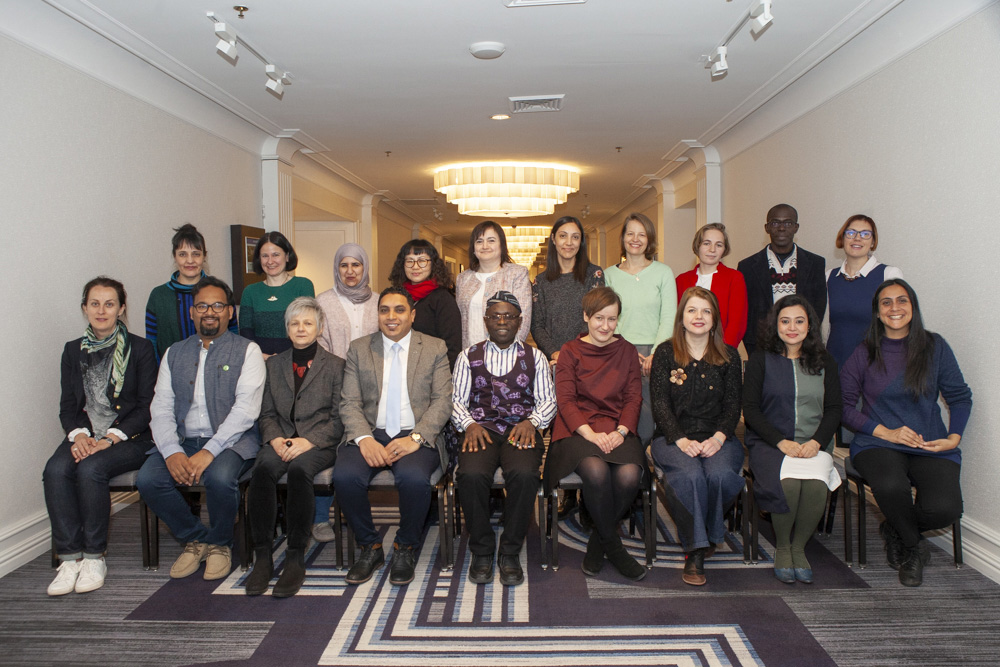
2020 CAA-Getty International Program Participants, photo by Stacey Rupolo.
Front row, left-right: Julia Waite (New Zealand), Saurabh Tewari (India), Daria Jaremtchuk (Brazil), Ali Mahfouz (Egypt), Akande Abiodun (Nigeria), Aleksandra Paradowska (Poland), Iro Katsaridou (Greece), Priya Maholay-Jaradi (Singapore), Giuliana Vidarte (Peru); Back row, left-right: Valeria PazMoscoso (Bolivia), Nora Veszpremi (Hungary/UK), Eiman Elgibreen (Saudi Arabia), Pedith Chan (Hong Kong), Mariana Levytska (Ukraine), Daniela Lucena (Argentina), Katarzyna Cytlak (Poland), Daria Panaiotti (Russia), Jean-Arsène Yao (Côte d’Ivoire), Irene Bronner (South Africa); Not pictured: Ganiyu Jimoh (Nigeria)
One for the Scrapbook! The 2020 CAA-Getty International Program participants—twenty scholars from nineteen countries—arrived in Chicago on the Sunday before the conference to get ready for a busy week of meetings, sessions, and one-on-one conversations. With this year’s participants, the program now includes 135 scholars from 48 countries, adding for the first time representatives from Bolivia, Singapore, and Côte d’Ivoire.
The preconference colloquium on February 11 was held at the School of the Art Institute of Chicago and featured papers on indigenous artists and contemporary art, the politics of cultural heritage, new subjects for art history, artistic exiles, and critical pedagogies.
Eleven US-based CAA members served as hosts for the international visitors, introducing them to scholars in their fields, taking them to Chicago-area museums, and attending their preconference colloquium.
Toward the end of the week, five alumni added their voices to the annual Global Conversation session, this year addressing Art History and the Politics of Vision.
As Julia Waite, from New Zealand, summarized the week: “Attending the CAA conference was hugely stimulating, and I left feeling excited about the future of art history. It reminded me of the strengths of deep art historical research in providing a more complex and nuanced understanding of art and society.”
Coronavirus-Related CAA Office Closure
posted by CAA — Mar 16, 2020
The recent outbreak of coronavirus (COVID-19) has forced us to make major changes to lives. It has hit our members hard, with the movement of classes online for the remainder of the semester, the closure of major museums, and the cancellation of exhibitions, art fairs, conferences, and meetings. Over the last ten days, we have been posting resources on our twitter feed and on CAA News to help those affected by this health crisis.
RESOURCES FOR CORONAVIRUS-AFFECTED ARTISTS AND FACULTY
For the health and well-being of our staff, we have moved to working remotely. That means that our offices in New York City are closed until further notice.
If you have questions about your membership, please email us at membership@collegeart.org, as we will be checking our voicemails infrequently. Please be patient with your request as we navigate this new way of working under extraordinary circumstances.
Above all, please remain safe and healthy!
Affiliated Society News for March 2020
posted by CAA — Mar 10, 2020
Affiliated Society News shares the new and exciting things CAA’s affiliated organizations are working on including activities, awards, publications, conferences, and exhibitions.
Interested in becoming an Affiliated Society? Learn more here.
Association of Print Scholars
Mari Carmen Ramírez, Wortham Curator of Latin American Art & Director of the International Center for the Arts of the Americas at the Museum of Fine Arts, Houston, delivered the Fifth Annual APS Distinguished Scholar Lecture in New York City on January 24, 2020. Her lecture, “Marks, Materials, and Matrices: Experimental Printmaking and Drawing Practices in Latin America,” is now online at our event archive.
At the 2020 CAA Annual Conference in Chicago, APS sponsored the panel, “Registering the Matrix: Printing Matrices as Sites of Artistic Mediation.” Organized by Jun Nakamura of the University of Michigan, the panel featured four presentations: Jesse Feiman’s paper on “The Triumphal Arch of Maximilian I,”; Laurel Garber on artistic interventions and inventions on printing matrices in nineteenth-century France; Elissa Watters on Manet’s etching “The Absinthe Drinker,”; and Rachel Vogel on conceptual printmaking at NSCAD.
APS is now accepting applications for the APS Publication Grant, which supports the publication of innovative scholarly research about printmaking across all time periods and geographic regions. The grant carries a maximum award of $2,000 and is funded through the Association of Print Scholars and the generosity of C.G. Boerner and Harris Schrank. Applications are due August 31, 2020 and further details can be found here.
AMCA (Association for Modern and Contemporary Art of the Arab World, Iran, and Turkey)
2020 Rhonda A. Saad Prize for Best Paper in Modern and Contemporary Arab Art
The 2020 Rhonda A. Saad Prize for Best Paper in Modern and Contemporary Arab Art was awarded to Maryam Athari for her paper “Diagnostic Revelation: Rifat Chadirji’s Street Photography.” Maryam is a PhD Candidate in Art History at Northwestern University. The Rhonda A. Saad Prize review committee found that Maryam’s paper ““Diagnostic Revelation” offers an insightful account of Rifat Chadirji’s entwined photographic and architectural practices that is theoretically, historically, and formally grounded. Connecting Chadirji’s photographs to contemporary image practices by Iraqi and European-trained architects, her paper carefully articulates that these photographs “investigate challenges faced by architectural modernism in Iraq and its relation to everyday people.”
Established in 2010 in honor of our dear and respected colleague and friend, The Rhonda A. Saad Prize aims to recognize and promote excellence in the field of modern and contemporary Arab art. The award is offered to a graduate student or recent post-doctoral scholar working in any discipline whose paper is judged to provide the most significant contribution to the disciplines of Art History and Middle East Studies. For more information, submission guidelines, and interviews with previous winners, please visit www.amcainternational.org.
AMCA, in collaboration with the University of North Texas, receives grant from the Getty Foundation
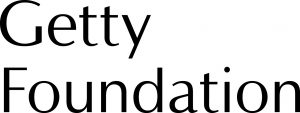
This project is made possible with support from the Getty Foundation through its Connecting Art Histories initiative.
AMCA is happy to announce receiving funding from the Getty Foundation, as part of its Connecting Art Histories initiative, to support “Mapping Art Histories in the Arab World, Iran and Turkey.” The project team, led by Nada Shabout, Sarah Rogers, Pamela Karimi, Jessica Gerschultz, Anneka Lenssen, Sarah-Neel Smith, Dina Ramadan, and Tiffany Floyd, will undertake extensive research on courses, programs, and alternative educational platforms and initiatives in the fields of art history, architectural studies, and archaeology throughout the region. With increasing interest in the modern and contemporary arts of the Arab world, Iran, and Turkey, the need for the field’s historiography has become vital. A publication and interactive map are planned.
Society of Architectural Historians
 The Society of Architectural Historians has launched three surveys to collect information from academics for its two-year study on the status of the field of architectural history in higher education in the United States, the SAH Data Project. The surveys are intended for chairs and administrators, faculty, and students and represent the most public phase of the project’s data collection to date. The aim of the SAH Data Project is to determine where and in what ways the field of architectural history is expanding, receding, or holding steady, and to consider the structural or cultural factors behind such trends.
The Society of Architectural Historians has launched three surveys to collect information from academics for its two-year study on the status of the field of architectural history in higher education in the United States, the SAH Data Project. The surveys are intended for chairs and administrators, faculty, and students and represent the most public phase of the project’s data collection to date. The aim of the SAH Data Project is to determine where and in what ways the field of architectural history is expanding, receding, or holding steady, and to consider the structural or cultural factors behind such trends.
The SAH Data Project team is using these surveys to gather some of the necessary quantitative data such as course enrollments over time, tenure-stream versus contingent faculty, faculty and student demographics. The surveys also collect crucial qualitative data about aspects of the field that may have long-lasting impacts, such as the effect of the 2008 economic downturn on architectural history programs and the extent to which students have demonstrated interest in themes related to social justice or the climate crisis.
The three surveys for academics will remain open through May 15, 2020. SAH will invite architectural historians working outside the academy to share their perspectives and contribute to the project later this spring. This includes architectural historians employed by government agencies, nonprofit organizations, museums, design education organizations, preservation organizations and architectural publications, to name a few.
In addition to online surveying, the project methodology also encompasses a variety of other kinds of quantitative and qualitative data-gathering tasks such as conducting in-depth group conversations with project constituents and analyzing existing publication lists for thematic trends over time.
More information and links to the surveys are available at sah.org/data-project.
The Renaissance Society of America
RSA 2020 Philadelphia
More than 2,200 scholars from across the country and the globe will be coming to Philadelphia in April for the largest international conference devoted to the study of the era 1300–1700. Join the Renaissance Society of America for one or for several of the more than 570 sessions taking place April 2–4, 2020. Sessions include:
“New Perspectives on Italian Art” – click here for details
“Reconsidering Raphael” – click here for details
Roundtable: “The Global Turn in Art History: Where Next” – click here for details
“Computer Vision and the Period Eye: Methodological Challenges for Computing Art” – click here for details
“Expanding the Canon: New Research of Artemisia, Marietta Tintoretto, Sofanisba, and Lavinia Fontana” – click here for details
“Placemaking and the Domestic Interior in Early Modern Europe” – click here for details
You can view the full program here.
Day passes are available. You can order a day pass here to reserve a spot at the conference.
Attendees will be coming to RSA 2020 Philadelphia from Europe, Asia, Africa, South America, and across Canada and the United States—and we hope you will join us too. Please email rsa@rsa.org with any questions.
Visual Resources Association News
The next VRA international conference for image media professionals will take place at the Royal Sonesta Harbor Court Hotel in Baltimore from March 24-27, 2019. We welcome CAA members as well as any intensive image users and like-minded information professionals to join in on what is an exciting schedule of workshops, sessions, meetings, tours, and social events in Maryland.
The Visual Resources Association is a multidisciplinary organization dedicated to furthering research and education in the field of image management within the educational, cultural heritage, and commercial environments that has been affiliated with CAA for many years (http://vraweb.org/).
In addition, the VRA Foundation (VRAF) continues to sponsor the Summer Educational Institute for Digital Stewardship of Visual Information (SEI), which is a joint project with the Art Libraries Society of North America (ARLIS/NA). This year it will take place from June 23-26 at Northwestern University in Evanston, IL. Beginning with the first institute held at Duke University in 2004, the goals for SEI have remained constant; to provide information professionals with a substantive educational and professional development opportunity focused on digital imaging, the information and experience needed to stay current in a rapidly changing field, and the opportunity to create a network of supportive colleagues. Nearly 400 visual resources professionals, librarians, museum professionals, graduate students, and individuals from an ever-widening number of fields have attended SEI and we welcome CAA members. For more information, see https://vrafoundation.org/summer-educational-institute/ and if you have any additional questions, please contact SEI Co-Chairs Courtney Baron or Bridget Madden.
For more information about the important work and professional development activities sponsored by the Visual Resources Association or the VRA Foundation, please contact Maureen Burns, VRA’s CAA Affiliate Representative at moaburns@gmail.com or 310-489-3792.
Historians of German, Scandinavian, and Central European Art & Architecture (HGSCEA)
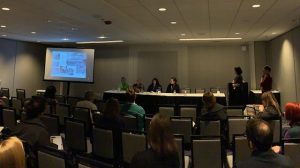 As always, the annual conference was a busy and exciting time for HGSCEA.
As always, the annual conference was a busy and exciting time for HGSCEA.
Jordan Troeller and Hyewon Yoon chaired HGSCEA’s sponsored session, “A Foreign Eye: Photography, Women, and Global Encounters in the Twentieth Century,” which was very well attended, It offered excellent papers by Kim Felt, Alyssa Bralower, Kim Sichel, and Elisaveta Dvorakk on the complex and often fraught positions occupied by German, Swiss, and French women who worked as photographers in Japan, Palestine, Africa, and Afghanistan from the 1920s to the 1940s.
Directly after the session, newly elected members of the Board – Nina Amstutz (at large), Jenny Anger (Secretary), Thor Mednick (at large), and Nick Sawicki (at large) – met with continuing and outgoing members at the annual business meeting to discuss officers’ reports and proposals for the 2021 sponsored session. Morgan Ridler (Web Manager), Jeffrey Saletnik (at large), Adrian Sudhalter (Treasurer), and James van Dyke (President) will continue on the Board, while Kathleen Chapman, Karla Huebner, Juliet Koss, and Marsha Morton are moving on.
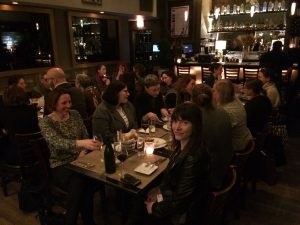
About thirty members gathered at Bistronomic for the annual members’ dinner. There, the results of the 2019 Emerging Scholars Publication Prize were announced. Honorable mentions went to Hannah Shaw for “The Trouble with the Censorship of August Sander’s Antlitz der Zeit” (PhotoResearcher) and to Kristin Schroeder for “A New Objectivity: Fashionable Surfaces in Lotte Laserstein’s New Woman Pictures” (The Art Bulletin). The winner was Aaron Hyman’s “The Habsburg Re-Making of the East at Schloss Schönbrunn, ‘or Things Equally Absurd’” (The Art Bulletin).
Finally, several members gathered at the Art Institute for a special HGSCEA event organized by Jay Clarke, Curator in the Department of Prints and Drawings. They had the opportunity to look closely at a large selection of works on paper ranging from Dürer and Hollar, through Kollwitz and Munch, to Kiefer and Trockel.
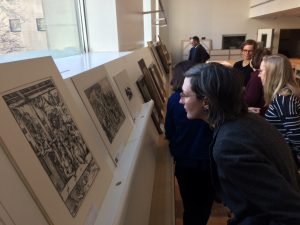
Public Art Dialogue (PAD)
Public Art Dialogue (PAD) is now accepting nominations for the 2021 PAD Award for achievement in public art. Past recipients include Michael Rakowitz, fierce pussy, and Judy Baca. Deadline is March 20, 2020. PAD is also soliciting submissions for its session during the 109th CAA Conference in New York. Abstracts of no more than 250 words are due April 1, 2020. Membership in Public Art Dialogue is required for all nominations and submissions, which may be sent to publicartdialogue@gmail.com. To join PAD, visit http://www.publicartdialogue.org/join.
Women’s Caucus for Art
Women’s Caucus for Art: Celebrating Achievements
The Women’s Caucus for Art hosted their annual conference concurrently with College Art Association national conference in Chicago, February 12-16, 2020. Under the conference theme of “Intersectionality,” WCA found many ways to celebrate the achievements of its members. WCA members exhibited work in two shows in Chicago during the conference – the national juried exhibition, Collectively Shifting, at Bridgeport Arts Center, and the Young Women’s Caucus exhibition, Intersectional History, at Woman Made Gallery. The Northern California chapter of WCA hosted an excellent panel discussion on “Amplifying Inclusion: Intersectional Feminism in Contemporary Curatorial Practice,” focused specifically on their F213 exhibition. WCA/CAA Liaison Rachel Epp Buller, along with SCWCA past president Niku Kashef, participated in several events celebrating the new co-edited book, Inappropriate Bodies: Art, Design, and Maternity. And the celebratory capstone event of the conference was the Lifetime Achievement Awards, presented in 2020 to Joyce Fernandes, Michiko Itatani, Judy Onofrio, Alison Saar, and Judith Stein, along with the President’s Awardee for Art and Activism, Rose Simpson.
SECAC
SECAC 2020 – Richmond,Virginia
Virginia Commonwealth University School of the Arts is honored to host the 76th annual meeting of SECAC in Richmond, VA from October 21-24, 2020. As its theme, the conference will engage the concept of commonwealth as an ideal of common good that pervades the political landscape of arts and educational institutions. We will question the complexities of a commonwealth, both in its original utopian form and its attendant failings as a colonial structure. With its rich history and diverse arts community, the city of Richmond will serve as an excellent setting to explore the 2020 conference theme through panel and round-table sessions, special events and exhibitions, and countless opportunities for individual exploration. We are planning for over 130 individual sessions at the 2020 conference, all to take place at the conference hotel, the Richmond Marriott Downtown (500 East Broad Street). Additionally, we have planned exciting programming for conference participants, including:
- Keynote lecture by Valerie Cassel Oliver, Curator of Modern and Contemporary Art at the Virginia Museum of Fine Arts
- Juried Members’ Exhibition at The Anderson (VCUarts campus), with prizes awarded by guest juror, Dr. Sarah Eckhardt, Associate Curator of Modern and Contemporary Art at the Virginia Museum of Fine Arts
- 2019 SECAC Artist’s Fellowship Exhibition at the VCUarts Fine Arts Building gallery, and opportunity for open studio visits
- Excursions to the Virginia Museum of Fine Arts, VCU’s Institute of Contemporary Art, and the Hartnett Museum of Art at the University of Richmond
Call for Papers: February 10 – April 1, 2020
Juried Exhibition Entries: February 18 – April 15, 2020
Early conference registration will open on August 4, 2020. Visit https://secacart.org/page/Richmond for registration rates and additional conference-related information.
Contact: secac2020@vcu.edu
Historians of Netherlandish Art
ARIAH (Association of Research Institutes in Art History) has awarded funds to the Journal of Historians of Netherlandish Art (jhna.org) for the development of hotspots in images for the lead article in the Summer 2019 issue (JHNA v. 11:2). This is E. Melanie Gifford’s “The Fall of Phaeton in the Evolution of Peter Paul Rubens.” Jennifer Henel will become the digital art history developer of the hotspots, along with Morgan Schwartz. The Summer 2019 issue was funded by the Samuel H. Kress Foundation.
HNA is soliciting proposals for a session topic for CAA 2021 in New York, which will be held February 10-13th at the Hilton. Our deadline for proposals will be Tuesday, April 14th, with a decision to be made shortly thereafter. Session proposals for HNA sponsorship should appeal broadly to our membership, and should focus primarily (but not necessarily exclusively) on art and architecture of the Netherlands from approximately 1350 to 1750. Chair(s) should be members of the HNA, and all speakers eventually selected are encouraged to be members as well. Session proposals should include a title and summary of the topic (a maximum of 400 words), and cv of the chair(s). Please submit your proposal to Louisa Wood Ruby, HNA Vice President, by April 14th via email: woodruby@frick.org.
Association for Textual Scholarship of Art History (ATSAH)
ATSAH Recent Publications
Andrzej Piotrowski, Professor, University of Minnesota, School of Architecture
The Routledge Handbook on the Reception of Classical Architecture, eds. Nicholas Temple, Andrzej Piotrowski, Juan Heredia (Abingdon & New York: Routledge, 2020).
Lindsay Alberts, Independent Scholar
Art Inquiries, Vol. 17, Number 4 (2019), covering Yale University Art Gallery’s exhibition “Leonardo: Discoveries in Verrocchio’s Workshop”
Sandra Cheng, Associate Professor of Art History, New York City College of Technolgy, CUNY
Sandra Cheng, “Ridiculous Portraits: Comic Ugliness and Early Modern Caricature” in Rire en images à la Renaissance, ed. by Francesca Alberti and Diane Bodart, 117-126. Turnhout: Brepols, 2018.
Eliana Carrara, Associate Professor of Art History, Università di Genova, Italy
- CARRARA E. (2019), Fonti storico-artistiche prevasariane sulla ‘Sala grande’, in ITALIANISTICA, XLVIII/1, 2019, pp. 107-123;
- CARRARA E. (2019), Il tema del Paragone delle Arti da Leonardo a Benedetto Varchi, in Nodi, vincoli e groppi leonardeschi. Études sur Léonard de Vinci. Sous la direction de Frédérique Dubard de Gaillarbois & Olivier Chiquet, Paris, Spartacus-idh, 2019, pp. 241-256;
- CARRARA E. (2019), Biografi e biografie di Leonardo fra Rinascimento e prima età moderna (XVI-XVIII secolo), in Leonardo da Vinci. Disegnare il future, catalogo della mostra a cura di Enrica Pagella, Francesco Paolo di Teodoro, Paola Salvi, Cinisello Balsamo (MI), Silvana Editoriale, 2019, pp. 157-181;
- CARRARA E. (2019), La correspondance de Giorgio Vasari: un exemplum du nouveau statut de l’«artefice», à la croisée de l’art et de la littérature, In Relier, délier les langues Formes et dés linguistiques de l’écriture épistolaire (Moyen Âge – première modernité), éds. C. Panzera et alii, Paris, Editions Hermann, 2019, pp. 179-204;
Lynette M.F. Bosch, Professor of Art History and Distinguished Professor at SUNY, Geneseo
2020 – Mannerism, Spirituality and Cognition: The Art of Enargeia, Routledge Press
2019 - Demi, Skira Press.
2019 – “The Cuban-American Exile Vanguardia: Towards a Theory of Collecting Cuban-American Art,” Picturing Cuba: Art, Culture and Identity on the Island and the Diaspora, University of Florida Press.
Liana De Girolami Cheney, President of ATSAH. Professor of Art History (emerita) UMASS Lowell
2020 editor, Readings in Italian Mannerism II: Architecture. Peter Lang
2020, “Lavinia Fontana’s Galatea: Personification of Fortune and Venus”
The Journal of Literature and Art Studies vol. 10. no. 1 (January 2020): 42-59.
- “Giorgio Vasari’s Mercury: God of Magic and Wisdom,” Journal of Cultural and Religious Studies,Vol. 7, No. 10 (October 2019): 511-50.



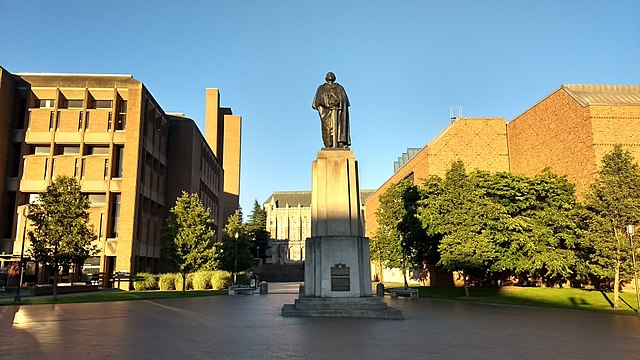
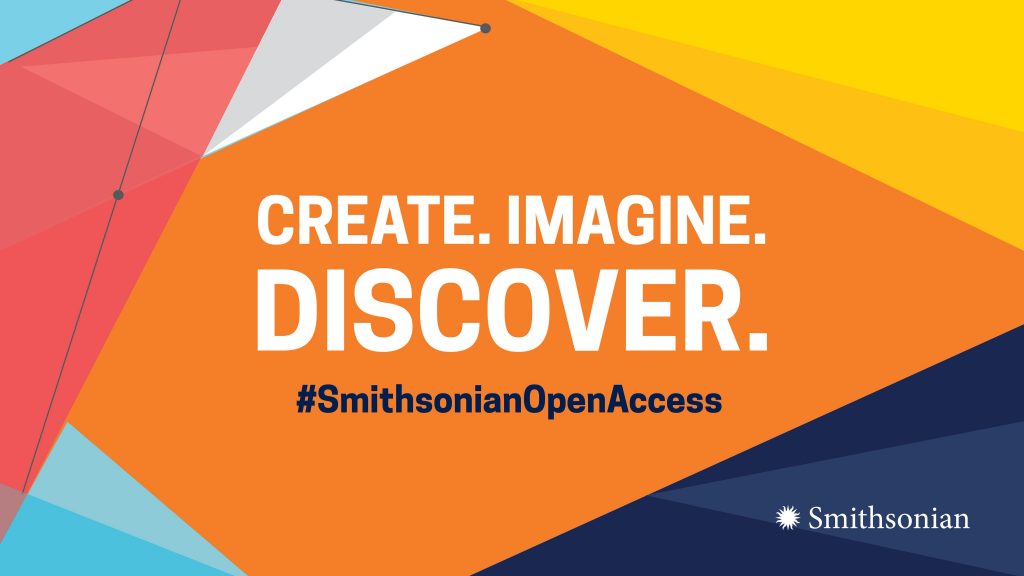
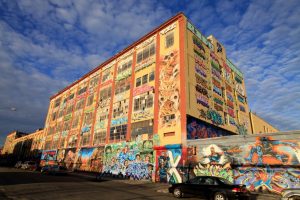
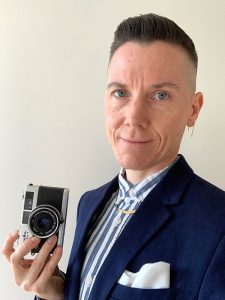
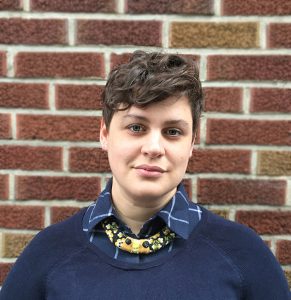
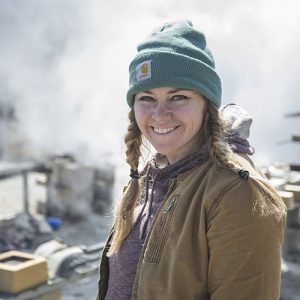 Leah Schretenthaler, University of Wisconsin-Milwaukee
Leah Schretenthaler, University of Wisconsin-Milwaukee 